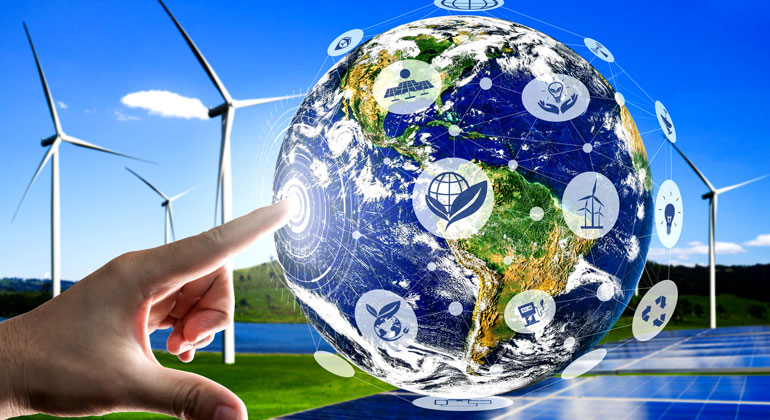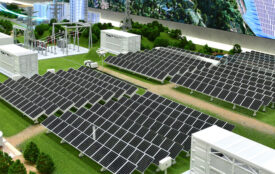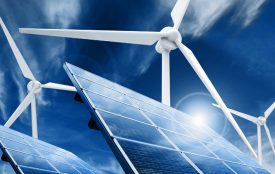WWEA Projection: 100% Renewable Energy in Germany
World Wind Wind Energy Association: Germany could already be drawing electricity from 100% domestic renewable energies:
- Expansion of renewable energies fell massively after EEG changes:
- Wind energy: from 14.4% growth (2001-2017) to 3.9% (2018-2024)
- Photovoltaics: from 64.2% growth (2003-2012) to 9.6% (2013-2024)
- Without interventions in the EEG, Germany could have achieved electricity from 100% domestic renewable energies as early as 2024, even under conservative assumptions, and as early as 2022 in a medium scenario
The Renewable Energy Sources Act (EEG), which came into force in 2000, triggered an unprecedented boom in the installation of renewable energies in Germany and encouraged dozens of other countries to follow suit. The success of the EEG was not only noticeable in installations, but also in considerable cost reductions, job creation effects and significant economic structural improvements, especially in often rural regions of Germany. The greatest successes were achieved in solar and wind energy, but there was also substantial growth in the biogas sector.
Unfortunately, not all subsequent governments continued this success story and imposed further restrictions that limited the impact of the EEG. The black-yellow government changed the remuneration for photovoltaics in 2012 in such a way that there was a significant slump in new installations and employment effects in the German solar industry from 2013 onwards (from around 150,000 to around 50,000 jobs). As a result, almost the entire solar industry moved to East Asia.
In 2017, the change from the degressive minimum price model in place since 2000 to tenders for wind energy led to a collapse of the wind energy market from the following year, which also cost a quarter of jobs in the German wind industry.
But how would the expansion have developed if the disastrous changes to the EEG in 2012 and 2016 had not been made?
Development of solar energy
In the years 2003-2012, installed solar energy capacity increased by an average of 64.2%. In the years 2013-2024, this growth fell to just 9.6%. The average annual growth in the amount of solar power fed into the grid even fell from 64.3% to 7.5%.
If this growth of 64% had continued, Germany would have an impressive capacity of 20,798 gigawatts in 2025 instead of the actual expansion level of just under 100 GW. Even with annual growth of just 30% from 2013, PV capacity would now be 1000 gigawatts. With an annual growth rate of 20% since 2013, an equally impressive 353 gigawatts would have been achieved. In reality, around 112 gigawatts will be installed in Germany by the end of 2025.

Development of wind energy
From 2001 to 2017, wind energy saw average growth rates of 14.4% in installed capacity and 16.7% in electricity generation from wind energy. From 2018 to 2024, i.e. since the introduction of tenders, annual growth fell to 3.9% in terms of new installations and electricity production.
If wind energy in Germany had continued to grow from 2018 as it has since the EEG came into force, Germany would have an installed capacity of 164,611 MW in 2025 instead of the expected 78,000 MW. Even with growth of 10%, the capacity at the end of 2025 would be 120,448 MW.

Development of electricity generation from renewable energies
Gross electricity consumption in Germany has remained relatively constant or even fallen in recent years and will amount to around 520 TWh in 2025. According to various forecasts, however, electricity consumption will increase again in the coming years due to electrification, particularly in transport and heating.
Renewable energies currently account for around 60% of net electricity consumption and a slightly lower share of gross electricity consumption. The German government aims to cover 100% of the electricity consumed in Germany from renewable energies by 2035.

Both bioenergy and run-of-river hydropower have seen relatively constant electricity generation in recent years, and this is expected to continue in the coming years. Growth in wind and solar power will therefore be crucial to achieving a full supply of renewable energies.
Other aspects such as the adaptation of the electricity grids or the increased use of storage systems will not be analysed here. An accelerated expansion of wind and solar goes hand in hand with a reorganisation of the electricity grids. In the case of battery storage, a sharp fall in prices and exponential growth can be observed anyway, so it can be assumed that such storage systems will ensure a balance between generation and demand, together with other flexibility options such as biogas.
Scenario 1: Unchecked expansion – 100% RE before 2018
If the expansion of both wind energy and solar energy had continued unabated and at the previous pace from 2013 and 2018 respectively, then Germany would have already obtained all of its electricity from domestic renewable energy sources before 2020.

Scenario 2: Medium expansion – 100% RE in 2022
In a medium scenario (continued 14.4% growth in wind energy, 30% growth in solar energy), the amount of electricity generated from wind and solar would have reached 579 TWh two years earlier, i.e. in 2022, which would have been significantly higher than the gross electricity consumption of 551 TWh in 2022.

Scenario 3: Low expansion – 100% RE in 2024
Based on a more conservative assumption of only 10% growth in wind energy from 2018 and 20% growth in photovoltaics from 2013, the two energy sources together would have supplied around 500 terawatt hours of electricity in 2024. Together with the 58 TWh of electricity from bioenergy and hydropower, this would have significantly exceeded Germany’s gross electricity consumption of 512 TWh in 2024 for the first time.

The data on installed capacity and electricity generation used in the charts and projections comes from the German Wind Energy Association, Fraunhofer ISE and the German Environment Agency, among others. The data for 2025 was estimated based on the development in 2024.
Background
The question arises as to whether the above scenarios would have been realistic development paths. Firstly, it should be noted that Germany had already experienced very strong growth and the industry had created corresponding capacities and jobs, which were then reduced again. The number of newly installed wind turbines is also a revealing figure: Germany reached its peak in terms of new installations shortly after the EEG came into force in 2002 with 2,328 new turbines. In 2023, only 745 new turbines were installed. An expansion of 2000 turbines with today’s standard 6 MW capacity would result in an increase in capacity of 12,000 megawatts. This would exceed the German government’s current expansion target of 10 gigawatts per year – although this still seems a long way off at present.
It is also worth taking a look at China. At the end of 2003, 567 MW of wind power were in operation there. In 2004, industrial development began on a large scale, significantly supported by the 3rd World Wind Energy Conference WWEC2004, which took place in Beijing in November 2004, the first major international event in China. A few months later, the Chinese government passed the first renewable energy law, which was modelled on the German EEG at the time.

Germany remained well ahead of China for a few years until 2009, when China equalled and then overtook Germany in terms of installed capacity with 25.8 GW each. In the years that followed, China continuously built up the world’s most powerful wind industry, with installed capacity exceeding 500,000 MW in 2024. The average growth in installed wind power capacity between 2004 and 2024 was an impressive 43.2%, and even in the years since 2017, when the expansion in Germany slumped massively, the annual growth rate was still 16.5%. The expansion of photovoltaics in China followed a similar trajectory, starting somewhat later but growing even faster.
Basis for success
A clear political commitment to the future of renewable energies is without doubt the most important basis for the success of wind and solar energy. This must then result in the political framework conditions that form the concrete basis for entrepreneurial investment decisions – in the area of system production as well as installation and operation. For both industrial sectors, long-term predictability and thus investment security is fundamental; structural disruptions, on the other hand, are detrimental to the development of generation plants, but also to the creation or retention of industrial leadership and corresponding production capacities.
This complete report can be downloaded in PDF format here in English and here in German








